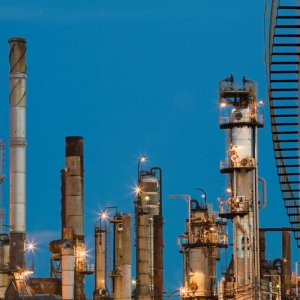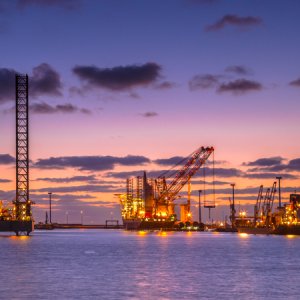Steady Hands Open Mexico’s New Offshore Frontier

STORY INLINE POST
Q: So far this year, Talos has drilled two of three appraisal wells on Zama. How are these wells faring?
A: We are attempting to open up and develop an Upper Miocene play on Zama. This is the same type of geology that is prevalent in the US Gulf of Mexico and offers superior rock properties on both sides of the border. Murphy’s announcement of its success in Block 5 also confirms our geological findings. These prolific rock properties, combined with the water depth and well depth we have, will ensure the smooth and more robust development and deliverability of this asset as we are able to use fixed structures, dry trees and a future platform rig.
Our platform in Zama will be the deepest fixed platform in Mexico’s history, even though it is located in a shallow water area. We already operate three standalone facilities in water depths over 300m in the US Gulf of Mexico; these water depths are our specialty. Many of the technologies used at these depths were developed in the US Gulf of Mexico within the last 30 years and we have employed the majority of them on our platforms.
When we performed the well test in the Zama-2ST well, we perforated two intervals with a combined rate of over 7.9 Mboe/d (90 percent oil) with a limited drawdown and without any particular completion technique, just a natural flow back. As we apply well-completion technologies, we would expect that our estimate could rise. We are comfortable with the guidance on the peak rate, which should be between 150Mb/d and 175Mb/d of oil equivalent.
Talos is in talks with midstream companies regarding the potential of installing new infrastructure around our asset. Our discovery is large enough to attract the interest of midstream groups that takes risks on infrastructure. This is exactly what we had hoped for. Any new infrastructure is broadly helpful to the reforms and other operators that may wish to access this infrastructure in the future.
Q: The Zama-2 appraisal well was finished 28 days ahead of schedule and 25 percent below budget. How was this achieved?
A: Talos partnered with our local service providers to make sure our logistics operation ran smoothly and that productive time was not wasted. But as this was only our second well, we set very conservative scheduling goals. Moving forward, we expect to move more quickly and reduce our costs as we become more assured in our operations. Our drilling should quicken pace as our team becomes better acquainted with the rock. This will result in reducing time and budget estimates to more realistic levels and they will become more difficult to beat.
Q: Talos took 714ft of whole core with a recovery rate of 98 percent at Zama-2 ST1. What is the value of the core analysis?
A: A company can never achieve better rock property measurements than with the rock in its hands. Wireline logs are helpful, but the rock itself is the best resource for understanding the properties, fluid content and behavior under different stresses and environments. With a core, tests can be conducted up and down the geological section, offering far greater insight. The data we acquired will be shared with PEMEX and will ultimately be given to the government so that the knowledge of this basin can be advanced and shared. This is Talos’ responsibility and we hope our data can help the entire country. We are intending to repeat our core recovery success when we commit our third appraisal well.
Q: What were the strategic reasons behind the crossassignment of Talos’ participating interest (PI) in Block 2 and Hokchi’s PI in Block 31?
A: When Block 2 and Block 31 went through bidding, we saw interesting prospects on both. And due to the smaller size of these blocks the ideas that both Talos and Hokchi had for development overlapped into each block acreage. The genesis for the cross assignment was to progress more quickly on both blocks by aligning rig programs and timelines. This has been carried out with our first rig program; one rig will drill two wells on each block. As a result, we only needed to tender once for all drilling rather than tendering multiple times. This saves time in exploration, appraisal and development, and with success, production can come online sooner.
Q: What have been the ongoing advantages of the Talos-Stone Energy merger?
A: In our first full year in operation following the merger, our pro forma adjusted EBITDA was US$585 million and our capital program was US$465 million. This freed up cash flow for the business and strengthened the balance sheet. Talos became larger and more robust than it had been alone. Despite being a larger company, Talos is still nimble compared to the major public companies. We still move in an aggressive, urgent manner, which can be seen in the way we use our appraisal program.
Q: How has Talos’ involvement in AMEXHI been helpful to maintain open communication with the new administration?
A: The post-election, pre-inauguration meeting we had with the administration to talk about the private sector’s goals and the expectations of the incoming government illustrates AMEXHI’s indispensability and that it is now more important than ever. Talos is committed to its role in AMEXHI and was honored to serve on the board. We have more full-time employees in the Mexico City office so the company can now spend more time working with similar organizations to keep the industry moving forward. With so many companies now drilling wells and trying to execute on their promises, both the private and public sectors have a shared goal of ensuring the Energy Reform adds value for the country.
Q: How is Talos set to partake in the administration’s drive toward doubling oil production by 2024?
A: Talos hopes that the administration’s goal will be achieved and we understand what the president is looking for from the private sector. President López Obrador’s statement that the private sector should spend money more quickly is entirely reasonable and Talos is following up on his request. We are dedicated to moving our operation along as fast as we can. The administration can see that the private sector has both larger NOC and IOCs, and a strong group of independents.
This will give them comfort because all types of company and all types of capital will be needed to achieve the goal of supporting the economy and growing oil production. Goal sharing is integral to this aim but the burden is on the private sector to effectively explain the chain of events that will lead us to first production. With open communication, we can ensure that the permitting process is more easily managed to save time for both parties. Talos has seen that the new administration is willing to listen and it is now the oil companies’ responsibility to do what we have promised.
The private sector as a whole must understand that governments move slowly. It is also unreasonable to expect any federal government to be outwardly commercial. Therefore, the responsibility falls to the private sector to communicate properly in the hope that the government responds. Talos has never been delayed on a permit because we had reasonable expectations of the new government. Setting realistic expectations is important; national governments naturally move slowly in comparison to small, private organizations.
Q: How has the suspension of bidding rounds and farmouts impacted Talos’ long-term strategy in Mexico?
A: The suspension of bidding rounds and farmouts has not changed Talos’ strategy; of course, we would be happy for the administration to reconsider its decision. The company is bullish on the overall potential in Mexico. That said, the lack of bid rounds puts a ceiling on Talos’ investments but it does not diminish the quality of the area we are working in and we still want to be in Mexico.
Talos Energy is a Houston-based exploration and production company focusing on deepwater activities in the US and Mexican Gulf of Mexico. The company’s 2017 Zama discovery ranked among the largest discoveries in the world in the last 20 years.
























